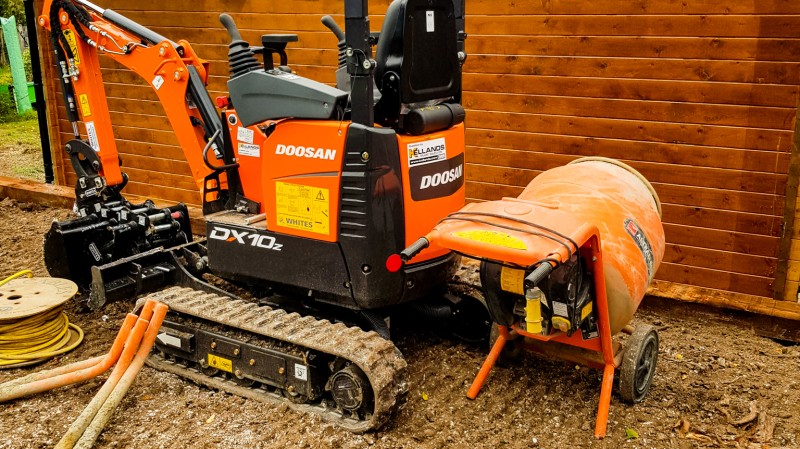You are here: How to take on council planning red tape
Building an extension isn’t always easy. Here are our top tips to navigate the planning process
Seeking planning permission to build a home extension can be stressful. It involves submitting a planning application to your local council and waiting for approval before the work can be done. The vast majority (87%) of householder applications in England were approved in 2021 but that still left 13,780 families suffering the disappointment of a refusal. So, what can be done to improve your chances of success?

Do I need planning permission?
Government has tried to reduce the layers of bureaucracy involved in home improvements. In many cases, homeowners who only want a small extension or loft conversion can do so under ‘permitted development’ (PD) rights. So, keep in mind what you’re trying to achieve and if you stay on the right side of the rules, you don’t need to submit a formal planning application, though you may still need prior approval.
Go to the website planningportal.co.uk to check out the rules. It’s a long list. Be aware that to qualify under PD rights, your project must comply with specific limitations on height, floorspace, distance from the boundary and more.
A simple loft conversion is among the most popular building work you can do using your rights. However, if you want to add front dormer windows to your new attic room you will need council go-ahead. Never assume an extension is acceptable, always check with your local planning authority – usually your district, city or borough council. If your home has already been extended, the PD rights may be lost.
Get stamp of approval
A Lawful Development Certificate is an optional legal document you can apply for which confirms you didn’t need full planning permission for the work. This paperwork will help you avoid a costly demolition and being unable to sell your property in future. It costs £236 – the same as a planning application.
Some architects advise clients to brave submitting a planning application rather than go down the PD route even if it takes a bit more time. This is because it gives homeowners more flexibility to build something more ambitous then allowed under PD rules.
If you live in a conservation area or national park, you will need to submit a planning application no matter what you are building. Work to a listed property will also require listed building consent, but that doesn’t mean you can’t build something fabulous.
Pre-application advice
Before submitting a planning application, you (or your architect) can discuss your project with a council planning officer. This pre-application advice can help identify if any changes are necessary and what information is required before you submit your planning application. This collaborative approach will take longer but is well worth it. Crucially, a planning officer will warn you early on if a project is a non-starter, saving you the cost and stress of an outright rejection. Most councils charge for this service.
Hire a local architect
The best way to avoid a refusal is to get your application right in the first place. Hire the best architect you can find for your project. By using a professional to submit your planning application, you will ensure your designs meet local policy and ticks all the right boxes, making it harder to refuse. As trained design professionals, architects are skilled at coming up with imaginative and unique solutions that you or your builder might not otherwise have considered. They will help you push the boundaries of planning policies rather than settling for something standard.
Employing a local architect is no guarantee of planning success but will significantly improve your chances if your extension is large or daring or your property is listed or in a conservation area.
Policy research
It pays to do your own research, too. Look at what kinds of extensions other people in your neighbourhood have built and familiarise yourself with the planning history of your property, all of which can be found on your council website. Look for any supplementary planning guides on what is acceptable in your area which will influence the overall design and choice of building materials. If you live in a national park, Area of Outstanding Natural Beauty or an Area of Designated Flood Risk, the rules are more stringent.
Neighbour friendly
Much of planning policy is aimed at protecting neighbours from loss of sunlight, invasion of privacy, parking issues and over-development. Take these factors into consideration when designing your scheme and you’ll have fewer objections lodged with the council from hostile neighbours, so a smoother ride through the planning process. This may mean making your extension smaller or moving it away from a neighbour’s land, for example.
To help keep your neighbours on side, discuss your proposals with them and show them any architects’ drawings before submitting a planning application.
Clear documentation
Planning applications are typically submitted online. Make sure your plans and drawings are easily readable, accurate and up to date or your application could be refused. All plans and drawings need a scale bar and a north point, or they could be returned.
Five different types of scale drawings and plans are generally used for householder planning applications:
- Location plans – based on an Ordnance Survey map using a standard metric scale (typically 1:1250) they show the location of your property. A red line should highlight the property boundary.
- Floor Plans – All existing and proposed rooms, spaces and physical features should be clearly identified. It must be drawn to an identified metric scale (typically 1:50).
- Roof plans – show the outline of the building from above and display existing and proposed features, such as hips, chimneys, slopes and roof lights
- Elevations – show a flat/representation of a building’s façade (side, front or rear) to show the building’s existing and proposed external appearance.
- Sections – show a vertical plane cut through a property. They are typically used to illustrate the relationship between different levels of an existing/proposed building.
Most people hire a chartered surveyor, architect or architectural technologist to prepare drawings and plans. Specialist reports may also be required. For example, a tree report, bat survey or flood assessment risk.
What if I can’t be bothered to get the official thumbs-up?
If your project needs planning permission and you do the work without getting it, you can be served with an enforcement notice ordering you to undo all the changes you have made. This draconian approach is most likely if it’s a flagrant breach of planning policy where permission was unlikely. For example, building a new mansion in the countryside. It’s illegal to ignore an enforcement notice, though you can appeal against it.
In most cases it’s not a criminal offence to extend a house without planning permission but if you are caught you may be invited to apply for retrospective permission. If refused, however, you can still be ordered to demolish the work.
However, if a local planning authority fails to take enforcement action against a breach of planning rules for four years - and you can prove that the extension or building has been there that long – it’s possible to apply for a Lawful Development Certificate. This means that while the structure doesn’t formally have permission, the council’s deadline for taking enforcement action has passed and so it is considered a legal structure.
Keep in contact
When your application is registered and validated by the council, you will be notified of your planning case officer. You (or your architect) should make contact and ask if there are any queries or further information they need. You will need to keep in contact with your case officer but don’t pester them as most planning departments are understaffed and officers have heavy caseloads.
Make contact again in about the sixth week of the statutory eight-week consultation after your neighbours and official bodies, such as the highways authority, have been consulted to gauge whether there have been any objections and if the planning officer will recommend approval or not. Applications can be withdrawn at any time, especially if you feel it’s going to be refused. Reapplying is free and there will be no refusal on record.
Planning rules aren’t just red tape. They are there to help deliver higher quality neighbourhoods and protect us all from inappropriate development. To improve your chances of success, take advice from architects and planning consultants who have vast experience of what is likely to be granted permission.
If you are looking to make some home improvements, you may find some of these services useful
Building Regulations
Find details of local experts who can help with Building Regulations
Builders
Find local help with a building project
Architectural Design Services
Find local Architectural Design experts
Structural Inspections
Find an expert to carry out a structural inspection
Building Surveys
I want a local surveyor to do a Building Survey for me
Choose which Architectural service you require
If you are not sure which service you require, check out the options available...


